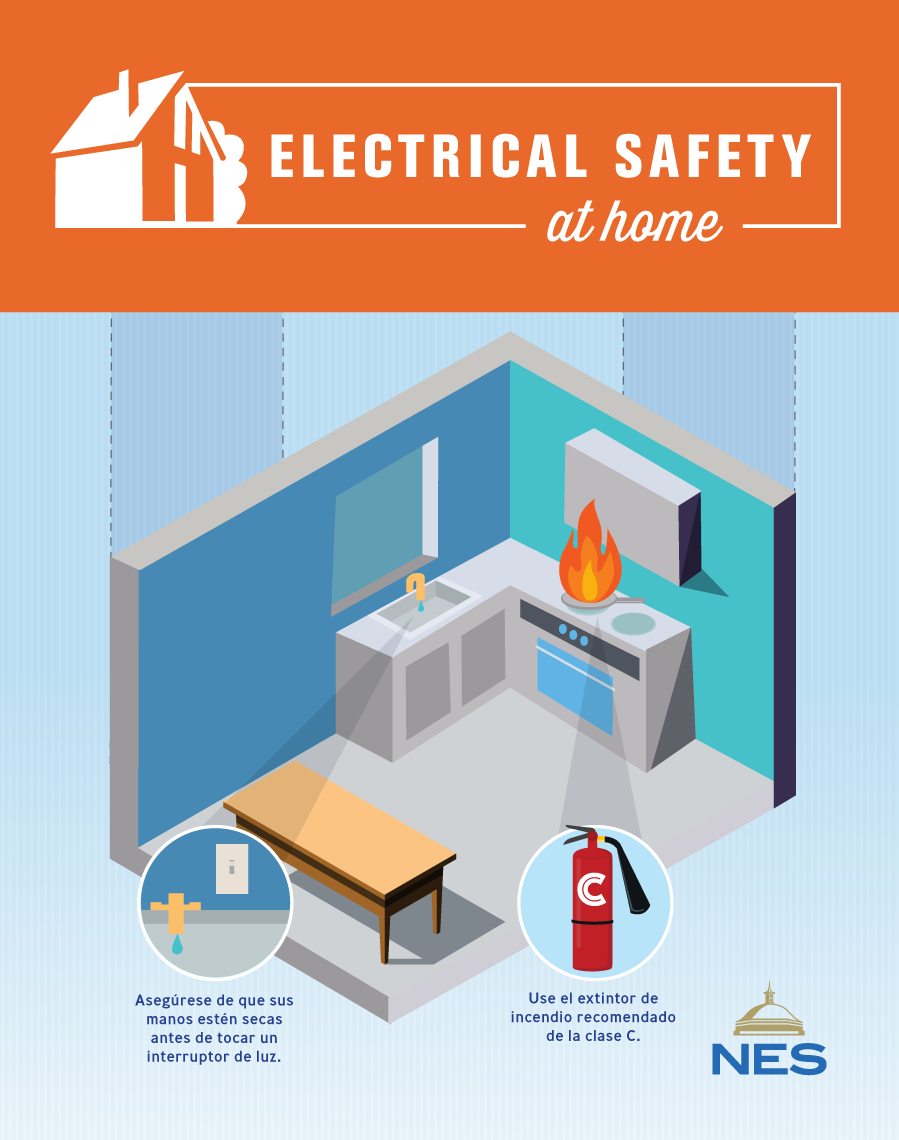Losing your home and all your belongings in a fire is devastating. With Fire Prevention Week underway, Nashville Electric Service (NES) is helping to spread the word about electrical safety and potential fire hazards.
- Manage all those cords. Make sure all electric cords are tucked away, neat and tidy, but don’t place cords under carpet or rugs. Replace any cords that are damaged or frayed.
- Listen to your breaker. A breaker that trips immediately after it’s reset could signal an electrical problem and potentially cause a fire. It may just be too large an electrical load operating on that circuit or something more serious.
- Fix lights that flicker. Loose wiring or a fixture that’s worn out can result in flickering lights. Turn off power and investigate the wiring and replace the fixture if necessary.
- Repair outlets that feel warm. If an outlet faceplate is warm to the touch, cut power at the breaker box and look for a loose splice, melted connections or burned insulation. It could also be that the wattage of the device you’re powering is too large for that outlet. Note: It’s not unusual for dimmer switches to be warm.
- Allow plenty of space around space heaters. Keep space heaters at least three feet away from any combustible materials such as bedding, furniture or drapes. Place the heater on a stable, level surface so it cannot be knocked over, and never leave it running unattended or while you’re sleeping.
Never throw water on an electrical fire. Water conducts electricity so throwing water on a fire could cause it to get larger. Instead, use a chemical fire extinguisher by following these four steps. Pull the fire extinguisher’s safety pin. Aim the nozzle at the base of the fire. Squeeze the extinguisher’s handle. Sweep the nozzle in a side-to-side motion until the flames are out.
And, know when to fight and when to flee. Firefighters recommend that if you have any doubt about fighting a fire, get out of the house as quickly as possible and call the fire department. Don’t let the fire get between you and the exit.
Be sure to check out our Electrical Safety at Home infographic for additional tips.
Tags:
